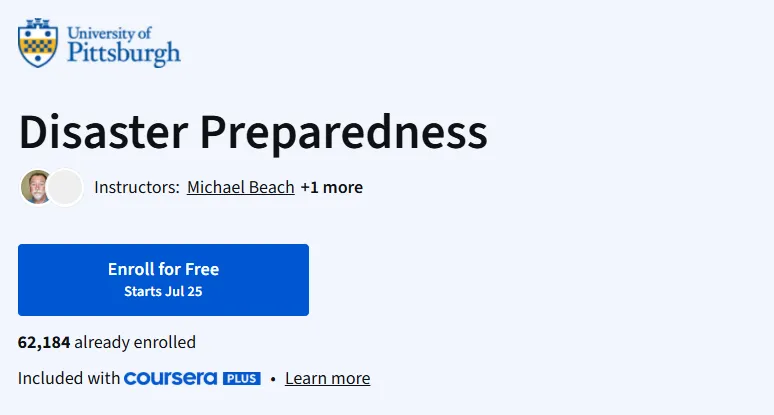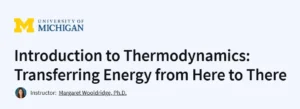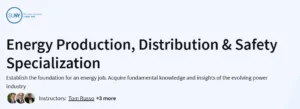What will you learn in Disaster Preparedness Course
Understand disaster risks and preparedness strategies for individuals and communities.
Identify different types of natural and man-made disasters.
Learn how to build emergency kits and develop family communication plans.
Recognize the roles of first responders and public health systems in emergencies.
Apply psychological preparedness and response methods.
Program Overview
Module 1: Introduction to Disaster Preparedness
⏱️ 1 week
Topics: Defining disasters, historical impact, why preparedness matters.
Hands-on: Personal disaster risk assessment.
Module 2: Preparing for Natural Disasters
⏱️ 1 week
Topics: Earthquakes, hurricanes, floods, fires—risk analysis and regional readiness.
Hands-on: Creating a home disaster kit.
Module 3: Man-Made Disasters and Public Health Emergencies
⏱️ 1 week
Topics: Chemical spills, pandemics, terrorism, public health coordination.
Hands-on: Case-based scenarios.
Module 4: Psychological Preparedness and Recovery
⏱️ 1 week
Topics: Mental health response, trauma-informed care, community support.
Hands-on: Coping strategy worksheet and resilience planning.
Module 5: Family and Community Planning
⏱️ 1 week
Topics: Building family plans, local emergency alerts, volunteering in disaster response.
Hands-on: Drafting a personalized communication and evacuation plan.
Get certificate
Job Outlook
Public Relevance: Highly applicable in emergency services, healthcare, community management, and education.
Roles: Emergency Preparedness Coordinator, Public Health Educator, Community Outreach Worker.
Demand: Growing importance due to climate change and global health threats.
Transferable Skills: Critical thinking, risk management, communication, mental health awareness.
Specification: Disaster Preparedness
|
FAQs
- No prior experience is required; the course introduces disaster preparedness concepts from the ground up.
- Basic understanding of safety procedures is helpful but not mandatory.
- Learners gradually learn to assess risks and plan for various disasters.
- Step-by-step guidance covers both natural and human-made emergencies.
- Beginners can develop foundational skills to respond effectively in disaster scenarios.
- The course covers creating emergency plans and evacuation procedures.
- Learners practice risk assessment and resource management for different scenarios.
- Communication strategies and coordination with authorities are introduced.
- Step-by-step exercises simulate real-world disaster preparedness planning.
- Skills gained are applicable for individuals, organizations, and communities.
- Learners explore strategies to reduce hazards and vulnerability.
- Exercises include identifying critical infrastructure and community resources.
- Knowledge of early warning systems and safety protocols is provided.
- Practical guidance helps develop long-term preparedness and resilience.
- Skills are directly applicable to emergency management roles and personal safety planning.
- Skills are highly valued in emergency management, public safety, and humanitarian roles.
- Knowledge improves employability for roles in government agencies, NGOs, and community organizations.
- Hands-on planning exercises demonstrate practical ability to potential employers.
- Understanding risk management and response protocols enhances professional credibility.
- Completion shows readiness to contribute to disaster preparedness and response initiatives.
- Estimated completion is around 3–5 weeks at a part-time pace.
- Weekly effort of 3–5 hours is generally sufficient for lectures and exercises.
- Regular practice in planning and assessment reinforces learning.
- Revisiting exercises or exploring additional preparedness scenarios may require extra time.
- Consistent engagement ensures learners develop both conceptual understanding and practical disaster preparedness skills.





